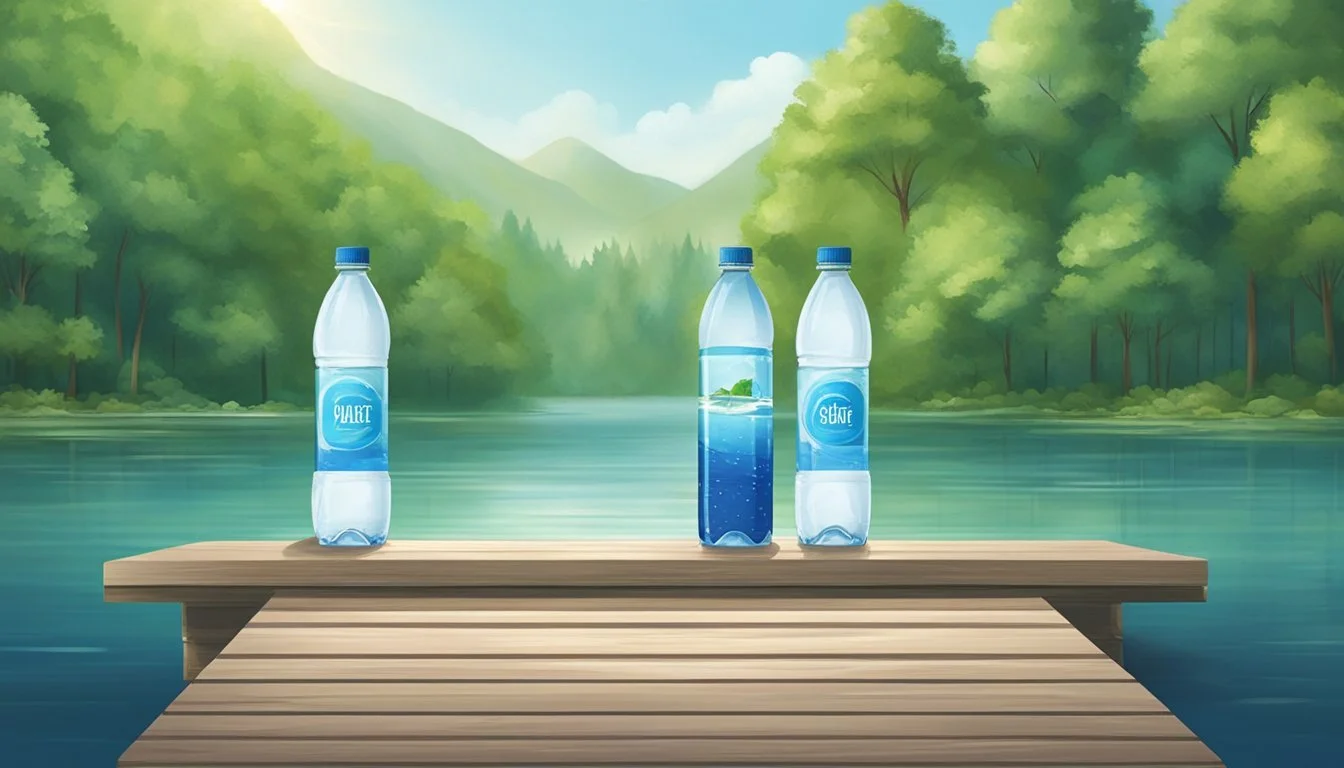Open Water vs. Pure Life
Expert Comparison of Bottled Water Brands
When it comes to selecting bottled water, choices such as Open Water and Pure Life often appear at the forefront of consumer preferences. Each brand brings unique qualities to the table, catering to different values and priorities when it comes to hydration. While Pure Life focuses on providing cost-effective hydration by offering larger quantities at reduced prices, Open Water distinguishes itself with eco-friendly packaging and a commitment to sustainability.
Consumers prioritizing environmental impact may lean towards Open Water, which is packaged in aluminum bottles to minimize plastic waste. On the other hand, those seeking a reliable, budget-friendly option might find Pure Life more appealing due to its wide availability and lower cost per bottle. Both brands, however, manage to maintain a reputation for delivering clean, accessible drinking water to their users.
Evaluating which brand is better largely depends on what the individual values most. Sustainable packaging and environmental concerns might tip the balance in favor of Open Water, but affordability and convenience often make Pure Life a consistent choice for many. The ultimate decision becomes a matter of personal priorities.
Understanding Bottled Water
Bottled water comes in various types, each with its own sources and processing methods, and is subject to regulations ensuring safety and quality. The market for bottled water is diverse, encompassing numerous brands and consumer preferences.
Types of Bottled Water
Bottled water can be categorized mainly into spring water, purified water, and natural spring water. Spring water is sourced directly from natural springs, maintaining the water's natural minerals. Purified water has been processed, usually through methods like distillation, deionization, or reverse osmosis, to remove impurities and contaminants. Natural spring water is often preferred for its taste and mineral content.
Each type has different attributes and benefits. For instance, Pure Life is a popular brand of purified water, ensuring consistent taste and safety by undergoing extensive filtration processes.
Bottled Water Regulations
Bottled water safety is regulated by several organizations to ensure it meets strict standards. In the United States, the Food and Drug Administration (FDA) sets regulations for bottled water, akin to the Environmental Protection Agency (EPA) standards for tap water. These regulations encompass everything from source protection and finished product standards to labeling requirements.
Companies must conduct regular testing for a variety of contaminants, and any deviations can lead to recalls or other enforcement actions. Such stringent standards help maintain consumer confidence in the safety and quality of bottled water.
Bottled Water Market Overview
The bottled water market is vast and continually growing. Brands like Pure Life and Open Water cater to diverse consumer needs and preferences. Factors driving market growth include health trends, convenience, and concerns over the safety of tap water.
Bottled water also varies widely in price, influenced by factors such as source, packaging, and brand reputation. For instance, purified water like Pure Life often comes at a lower cost due to large-scale production and efficient distribution, whereas premium spring water might be pricier. This diversity allows consumers to choose based on both taste and budget.
Health and Safety Considerations
When choosing between Open Water and Pure Life, it's important to compare their health and safety aspects, focusing on water source, potential contaminants, and the benefits of mineral content.
Water Source and Quality
Open Water sources its water from natural springs, which typically contain fewer contaminants and have a more consistent mineral profile. Pure Life, on the other hand, uses municipal water sources that undergo extensive purification to meet safety standards.
The quality of the water source plays a crucial role in the final product. Open Water emphasizes the purity of its spring sources, while Pure Life relies heavily on advanced filtration techniques to ensure quality.
Contaminants and Filtration
Both brands take different approaches to filtration. Open Water uses a multi-step process that includes reverse osmosis, UV light treatment, and carbon filtration to remove impurities. Pure Life employs a similar multi-stage filtration process, including reverse osmosis, to eliminate contaminants like lead and other heavy metals.
Consumer Reports have found various contaminants in bottled water brands. Ensuring the purification process effectively removes these potential health hazards is crucial. Both brands' rigorous filtration processes significantly reduce the risk of contaminants.
Mineral Content and Health Benefits
Mineral content is another critical factor. Open Water maintains the natural mineral composition of its spring water, providing beneficial electrolytes like calcium and magnesium. Such minerals can support hydration and overall health.
Pure Life adds minerals after purification to enhance the taste, which includes electrolytes but may not offer the same natural balance as spring water. Comparing the two, Open Water likely offers a more natural mineral profile, which can be beneficial for those looking to maintain or improve their mineral intake through their drinking water.
Pure Life provides a reliable option for those who prioritize taste and consistent mineral additions. Both options address health and safety in different but effective ways.
Environmental and Sustainability Issues
Choosing between Open Water and Pure Life involves considering their impact on the environment, particularly their use of plastic bottles and the sustainability of their water sourcing methods.
Plastic Use and Waste Management
Both Open Water and Pure Life utilize plastic bottles for their products. Open Water emphasizes its use of recyclable aluminum bottles as a more environmentally friendly alternative. This practice reduces the amount of plastic waste and encourages recycling.
Pure Life, a brand under Nestlé, extensively uses plastic bottles, which contributes to environmental waste if not properly managed. Although Pure Life has initiatives for recycling and reducing plastic usage, the overall impact of plastic waste is significant. BPA, a chemical in plastics, is also a concern with some types of plastic bottles, although both brands claim to use BPA-free materials.
Water Sourcing and Environmental Impact
Open Water sources its water from purified tap water. This practice minimizes environmental impact by avoiding the depletion of natural water sources. The purification process is designed to ensure quality and consistency in taste.
Pure Life sources its water from various natural sources and then subjects it to a multi-step filtration process. While this approach ensures consistent quality, it also has a larger environmental footprint due to the extraction and transportation involved. The sustainability of Pure Life's water sourcing is under scrutiny as it involves significant energy consumption and carbon dioxide emissions.
Choosing between these brands requires weighing the trade-offs in plastic waste and environmental impact arising from their water sourcing practices.
Comparing Open Water and Nestlé Pure Life
Both Open Water and Nestlé Pure Life offer distinct characteristics in terms of brand ethos, taste, purity, and convenience, making them suitable for different types of consumers.
Brand Profiles
Open Water is positioned as an environmentally-friendly brand, using 100% recyclable aluminum packaging. It emphasizes sustainability and aims to reduce plastic waste. They source their water from sustainable sources, ensuring minimal environmental impact.
Nestlé Pure Life, produced by Nestlé Waters, is one of the most recognized bottled water brands globally. It focuses on providing affordable, purified water. Sourced from various locations, it undergoes a rigorous purification process to maintain quality.
Taste and Purity
Open Water offers a crisp and clean taste, largely attributable to its rigorous filtration process. The water is free from added minerals, resulting in a neutral taste profile. Purity is a critical factor, maintained by sourcing from protected natural springs and advanced filtration.
Nestlé Pure Life is also known for its clean taste but includes added minerals for flavor. The purification process includes reverse osmosis and other advanced techniques to ensure purity. Taste can vary slightly due to the added minerals, providing a balanced taste sensation.
Cost and Convenience
Open Water is often priced higher due to its sustainable packaging and sourcing practices. This might appeal to consumers who prioritize environmental benefits. Convenience includes availability in select retail and online platforms, which may limit accessibility.
Nestlé Pure Life is widely available in supermarkets, convenience stores, and online. Often sold in bulk, it offers a cost-effective option for daily hydration. The broad availability and competitive pricing make it a convenient choice for many consumers.
Comparing these brands highlights the different priorities and consumer needs they address, from environmental sustainability to widespread accessibility and affordability.
Consumer Concerns and Preferences
Consumers today have specific preferences and concerns when selecting bottled water. These include the flavor profile and palate satisfaction, the packaging and accessibility of the product, as well as personal values and choices.
Flavor and Palate Satisfaction
The taste of bottled water can significantly influence consumer choice. Many individuals undergo taste tests to determine which brand offers the most refreshing and crisp taste.
Open Water often boasts a clean and neutral flavor that appeals to a broad audience. In contrast, Pure Life by Nestlé typically provides a balanced taste, appreciated by those who prefer a neutral profile.
Consumer preferences are subjective; what one finds refreshing, another may not. Hence, the decision often rests on individual palate satisfaction.
Packaging and Accessibility
Packaging plays a crucial role in consumer preference. Open Water features environmentally conscious packaging options like aluminum, which are gaining popularity for their sustainability.
Meanwhile, Pure Life utilizes plastic bottles, which are typically convenient and widely available. The use of BPA-free bottles in Pure Life provides reassurance to health-conscious consumers.
Accessibility also influences decision-making. Pure Life is often found in various retail locations, making it a go-to for convenience. Open Water, though sometimes less widely available, appeals to eco-conscious buyers.
Personal Values and Choice
Personal values significantly impact water bottle selection. Environmental impact is a primary concern for many. Open Water’s commitment to reducing plastic waste by using aluminum cans aligns with eco-friendly values.
Consumers who prioritize health and hydrating on-the-go may lean towards Pure Life for its convenience and BPA-free options.
Ultimately, the choice is often a reflection of an individual’s lifestyle and priorities. Some prefer sustainable packaging, while others opt for readily accessible and health-conscious options.
In-Depth Analysis of Selected Brands
This analysis dives into the distinct characteristics and qualities of Nestlé Pure Life and Fiji Natural Artesian Water, focusing on their taste, sourcing, and mineral content.
Nestlé Pure Life
Nestlé Pure Life positions itself as a cost-effective choice for consumers. Taste-wise, it generally offers a neutral and balanced flavor.
The water is sourced from various locations, undergoing rigorous purification processes, including Hydro-7. This multi-step filtration system removes impurities, ensuring consistent quality.
Packaging is available in various sizes, often sold in bulk. This helps reduce the cost per bottle.
Microplastics have been found in some bottled waters, including those from Nestlé Pure Life, which raises concerns about the safety and purity of the water.
Fiji Natural Artesian Water
Fiji Natural Artesian Water is known for its smooth, soft taste, attributed to its natural filtration process. It originates from an artesian aquifer in Fiji, providing a unique mineral profile.
The mineral content includes silica, calcium, and magnesium, which contribute to its distinct taste and perceived health benefits.
The water undergoes minimal processing since it is naturally filtered through volcanic rock, maintaining its natural purity.
Packaging typically features a square bottle, enhancing its premium image. Despite higher costs, many consumers prefer Fiji Water for its quality and taste.
Overall, Fiji emphasizes the importance of pristine sources and natural filtration, which sets it apart from many other brands.
More About Open Water
Aqua Carpatica vs Open Water: Which Bottled Water is Better?
Cascade Mountain vs Open Water: Which Bottled Water is Better?
Core Hydration vs Open Water: Which Bottled Water is Better?
Crystal Geyser vs Open Water: Which Bottled Water is Better?
Hawaii Volcanic vs Open Water: Which Bottled Water is Better?
Hawaiian Springs vs Open Water: Which Bottled Water is Better?
Icelandic Glacial vs Open Water: Which Bottled Water is Better?
Mountain Valley Spring Water vs Open Water: Which Bottled Water is Better?
Nestle Pure Life vs Open Water: Which Bottled Water is Better?
Open Water vs Kirkland Signature: Which Bottled Water is Better?
Open Water vs Whole Foods 365: Which Bottled Water is Better?
Richard's Rainwater vs Open Water: Which Bottled Water is Better?
San Pellegrino vs Open Water: Which Bottled Water is Better?
Solan de Cabras vs Open Water: Which Bottled Water is Better?
Talking Rain AQA vs Open Water: Which Bottled Water is Better?
Whole Foods Italian Still Mineral water vs Open Water: Which Bottled Water is Better?
More About Pure Life
Cascade Mountain vs Pure Life: Which Bottled Water is Better?
Hawaii Volcanic vs Pure Life: Which Bottled Water is Better?
Hawaiian Springs vs Pure Life: Which Bottled Water is Better?
Icelandic Glacial vs Pure Life: Which Bottled Water is Better?
Nestle Pure Life vs Pure Life: Which Bottled Water is Better?
Pure Life vs Kirkland Signature: Which Bottled Water is Better?
Pure Life vs Whole Foods 365: Which Bottled Water is Better?
Richard's Rainwater vs Pure Life: Which Bottled Water is Better?
Solan de Cabras vs Pure Life: Which Bottled Water is Better?
Talking Rain AQA vs Pure Life: Which Bottled Water is Better?
Whole Foods Italian Still Mineral water vs Pure Life: Which Bottled Water is Better?





